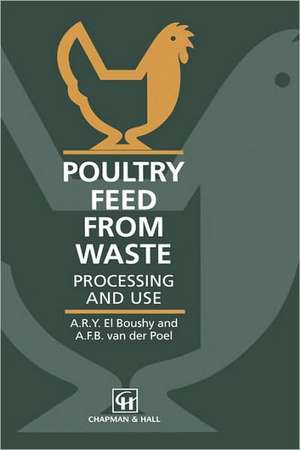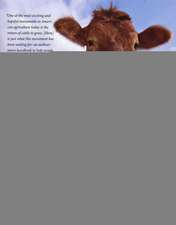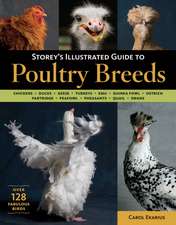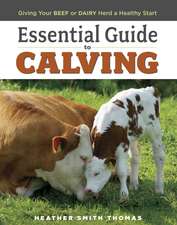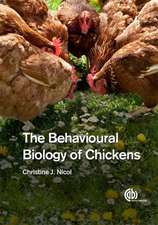Poultry Feed from Waste: Processing and use
Autor A.R.Y. El Boushy, A.F.B. Van Der Poelen Limba Engleză Hardback – 14 aug 1994
Preț: 1425.61 lei
Preț vechi: 1500.64 lei
-5% Nou
Puncte Express: 2138
Preț estimativ în valută:
272.83€ • 283.78$ • 225.23£
272.83€ • 283.78$ • 225.23£
Carte tipărită la comandă
Livrare economică 14-28 aprilie
Preluare comenzi: 021 569.72.76
Specificații
ISBN-13: 9780412582806
ISBN-10: 0412582805
Pagini: 438
Ilustrații: XII, 438 p.
Dimensiuni: 155 x 235 x 25 mm
Greutate: 0.81 kg
Ediția:1994
Editura: Springer Us
Colecția Springer
Locul publicării:New York, NY, United States
ISBN-10: 0412582805
Pagini: 438
Ilustrații: XII, 438 p.
Dimensiuni: 155 x 235 x 25 mm
Greutate: 0.81 kg
Ediția:1994
Editura: Springer Us
Colecția Springer
Locul publicării:New York, NY, United States
Public țintă
ResearchDescriere
In developed market economies with intensive animal production systems, such as The Netherlands, many new feedstuffs have been introduced as part of the diets of ruminant and monogastric animals. These new feedstuffs are often by-products of human food processing. It is important that these by-products and also the by-products from wastes are properly evaluated with regard to the possibilities of incor porating them into livestock diets. Research on the subject of feed from waste, its processing and its use in the nutrition of poultry has increased considerably during the last decade. The Department of Animal Nutrition of Wageningen Agricul tural University (WAU), Wageningen, The Netherlands, in close co operation with the Poultry Feeding and the Processing Industry, has been active in this field. In order to update research and to expedite further work in this field, a comprehensive review of the literature on the subject of feed from waste was made. Such a study would not only bring the industry up to date on the subject but could also indicate specific topics which may be of great value for developing market economies. Poultry scientists and technologists suggested that a review would fill a need as a reference and textbook, not only for the industry but also for undergraduates and graduates of agricultural colleges and extension services all over the world.
Cuprins
1 The benefit of feed from waste.- 1.1 General introduction.- 1.2 Analytical studies and estimates of food and waste production.- 1.3 Benefits derived from the use of feed from waste.- 1.4 Increase of population and the shortage of food supply.- 1.5 The role of developed countries supporting developing market economies.- 1.6 Conclusions.- References.- 2 Dried poultry waste.- 2.1 Introduction.- 2.2 Dried poultry waste.- 2.3 Biological conversion methods to improve cage layer manure.- References.- 3 Protein recovery from wastewater in poultry processing plants.- 3.1 Introduction.- 3.2 Processing of the recovered protein effluent.- 3.3 Chemical analysis and nutritive value.- 3.4 Its use in feeding.- 3.5 Biohazards of recovered sludge.- References.- 4 Poultry by-products.- 4.1 Introduction.- 4.2 Feather meal.- 4.3 Poultry by-product meal.- 4.4 Hatchery by-products.- 4.5 Shell waste from egg-breaking plants.- 4.6 Biohazards of poultry by-products.- References.- 5 Hide and tanning waste by-products.- 5.1 Introduction.- 5.2 Technological aspects.- 5.3 Chemical analysis and nutritive value.- 5.4 Its use as a feedstuff.- References.- 6 Fruit, vegetable and brewers’ waste.- 6.1 General introduction.- 6.2 Tomato residues.- 6.3 Citrus pulp.- 6.4 Potato residues.- 6.5 Grape and wine residues.- 6.6 Date residues.- 6.7 Apple residues.- 6.8 Mango seed.- 6.9 Guava seed.- 6.10 Brewers’ dried grains.- References.- 7 Municipal refuse.- 7.1 Introduction.- 7.2 Processing of municipal refuse.- 7.3 Chemical analysis and nutritive value.- 7.4 Municipal refuse in the nutrition of poultry.- References.- 8 Palatability and feed intake regulations.- 8.1 Introduction.- 8.2 Sensory involvement in controlling feed intake.- 8.3 Palatability and feed acceptability.- References.
